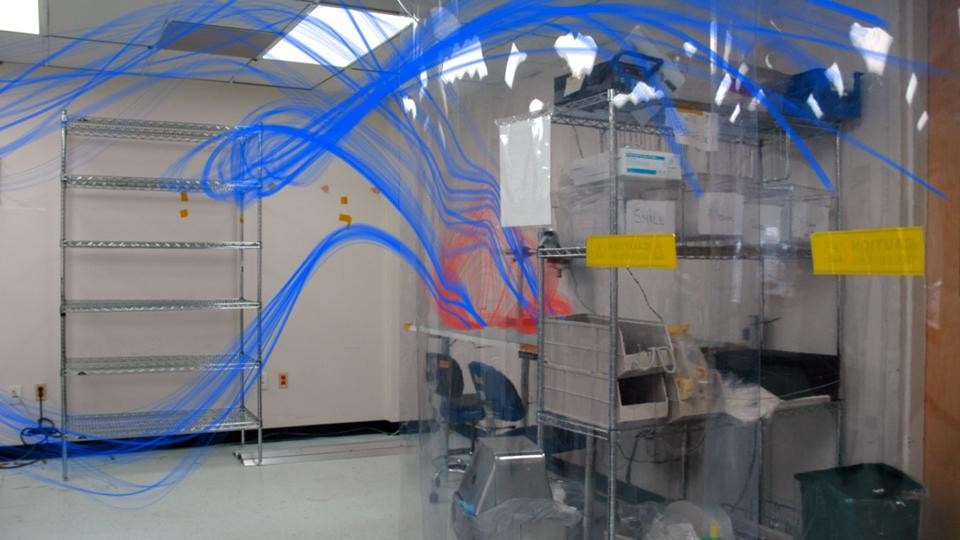On this context of enigmatic topologies which has been there for more than a century, the projects presented at this exhibition simply makes visible the territories created by invisible waves. As Lucy Bullivant pointed in 2005 [1]:
"Electromagnetic space—also called Hertzian space—is physical and nonvirtual. It consists of a ghostly poetic ecology that exists just beyond our familiar perceptual limits."
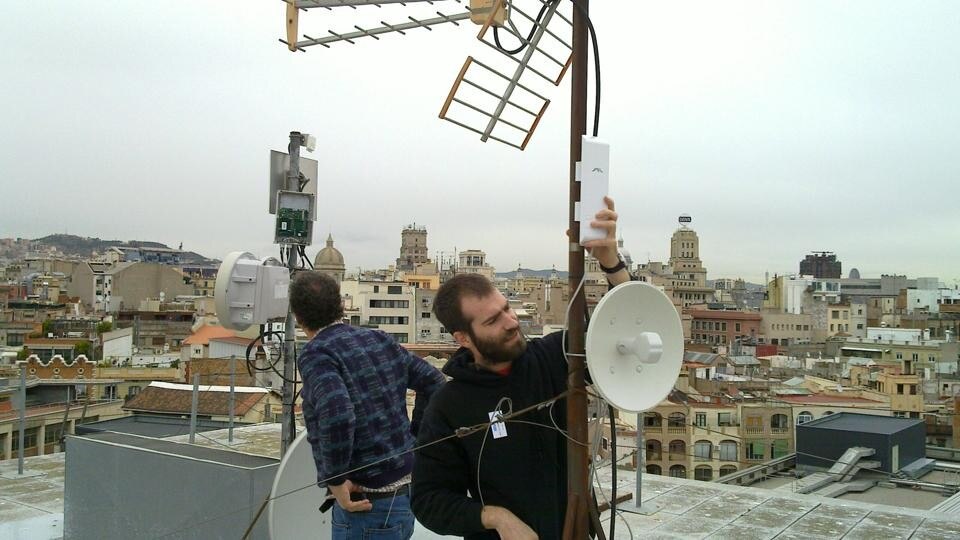
Can we talk about radio waves as a new territory created by invisible infrastructures? After visiting the exhibition, we can respond that undoubtedly yes. Anthony DeVicenzi with his installation Invisible Forces responds to the question What surrounds us?, showing us that this new territory is inhabited by much more than what we can see, touch, and feel. He explains: "Beyond atmosphere, particular and solid matter, our bodies encounter many forms of invisible radiation: electromagnetic, wifi, gsm, audio and white noise."
On the other hand, Timo Arnal makes these invisible infrastructures visible. His project Nearness, Wireless in the World, Light Painting Wifi uses light painting signal strength in long-exposure photographs to explore the WiFi networks in urban spaces, making a complete cartography of this urban landscapes.
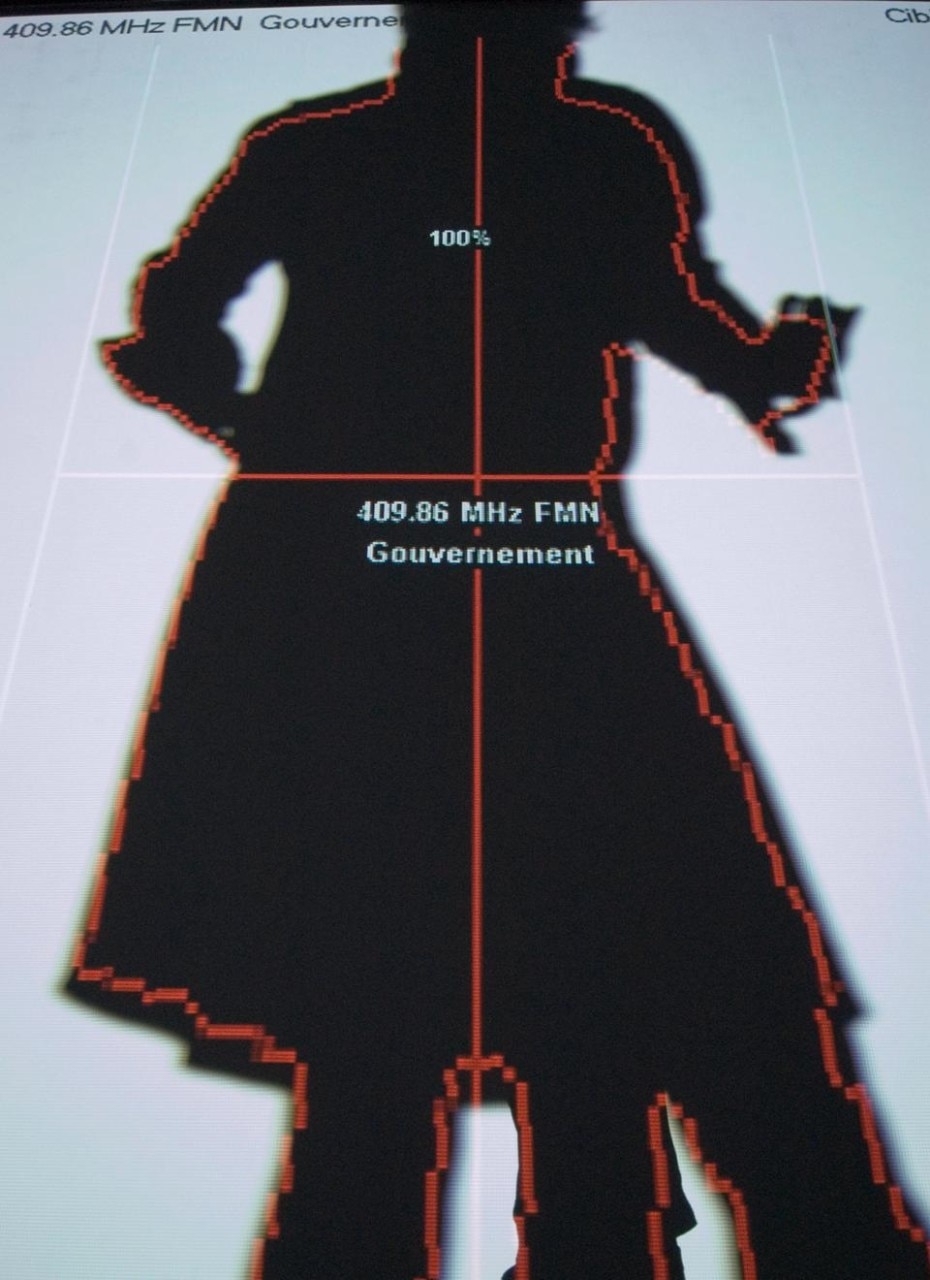
The activist geographer Trevor Paglen acts here as an agent provocateur using his video Drone Vision, an unmanned American drone surveillance transmissions intercepted, to make us aware of the fragility of information codes, showing how they were able to get access to the source material surreptitiously downloading it from an unsecured communications satellite. Semiconductor is an artist duo that uses video as part of their research. Their Magnetic Movie represents the secret lives of invisible magnetic fields using VLF audio recordings that control the evolution of the fields as they delve into our inaudible surroundings. They wonder provocatively, "Are we observing a series of scientific experiments, the universe in flux, or a documentary of a fictional world?"
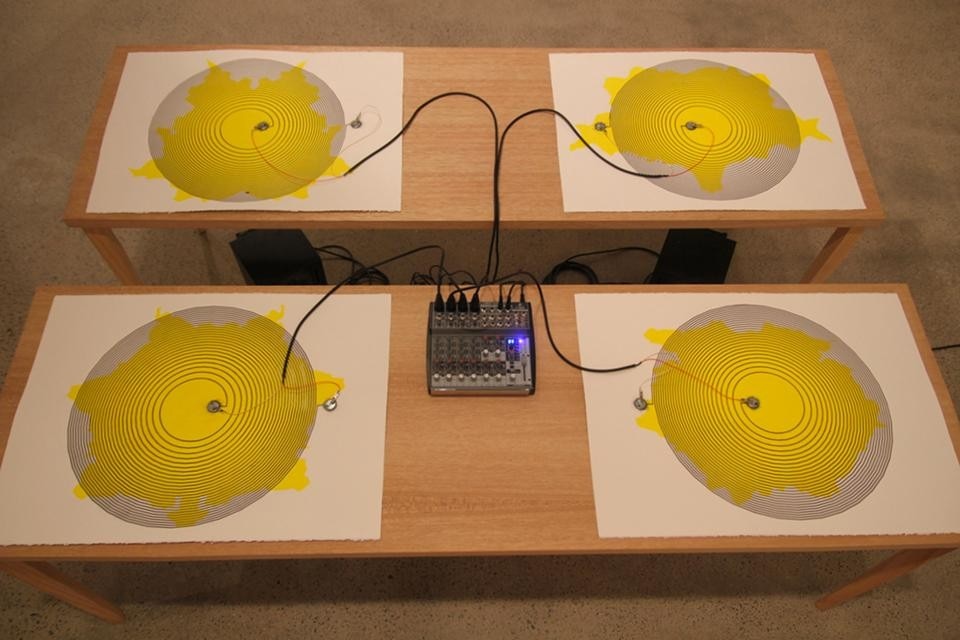
Ethel Baraona: How does your interest in radio waves start? Can you explain us the genesis of this project?
José Luis de Vicente: I have an ongoing interest in my work in the infrastructures of information society, the historical, political and technological factors that have shaped them, and their impact on us as citizens. I feel it's hard to talk about technology as a agent of transformation without paying more attention to what goes in the infrastructural layer. This is quite common in architecture and urbanism, for obvious reasons, not so much in design or contemporary art.
And one of the grand narratives about this theme is the progressive process of conquest and colonization of the radio spectrum throughout the 20th century, culminating in a way in the Digital Switchover in the first years of the 21st century. I've thought for a long time this is a story that has not been told cohesively, and evaluated from different disciplinary perspective. "Invisible Fields" is not that (that would be a titanic project, the work of a lifetime) but intends to be another piece in the construction of this greater story.
Both me and my co-curator Honor Harger have shared a fascination with this topic for a long time, and had done previous projects about it. She had done pioneering work in the field as a member of art collective radio q u a l i a, as well as doing her PhD on art and radioastronomy; and as a director of the AV Festival in Newcastle, in 2008 she curated a big conference and exhibition on it. I had done a previous humble exhibition project at the ZEMOS98 Festival in Sevilla called "Reclaim the Spectrum", and along with Irma Vila and Data Visualization studio Bestiario developed a project called the "Atlas of Electromagnetic Space", a representation of the Spectrum Allocation Chart that also worked as a catalogue of interventions by artists, hackers and designers in the radio spectrum.
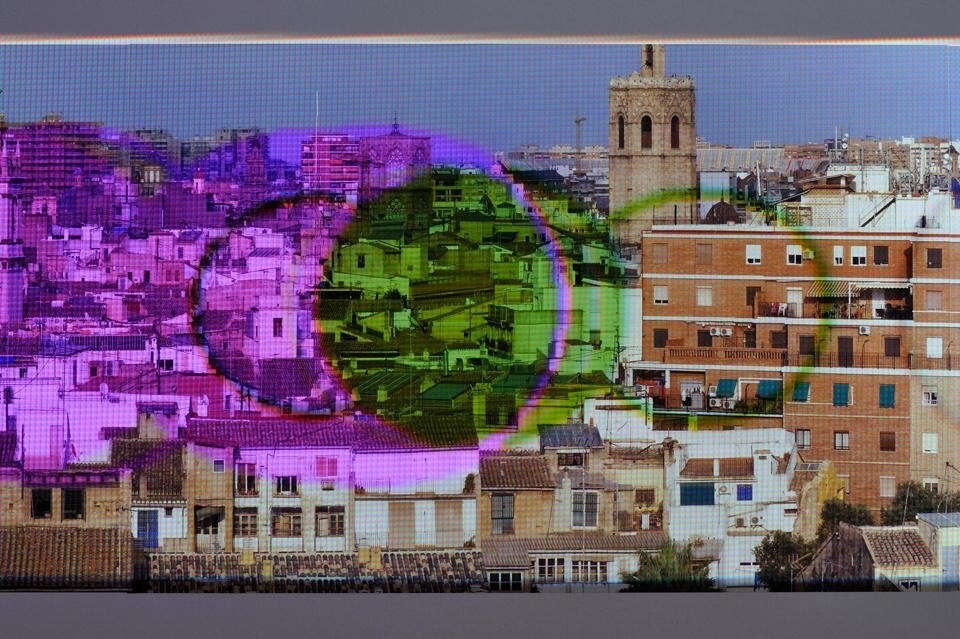
In the last 15 years there has been a good body of theory discussing the impact of radio waves and radio technologies in urban space; from William J. Mitchell's insistence in thinking the essence of the contemporary city not only as a space made of concrete and bricks, but also of flows of information channeled through waves, to Anthonny Dunne's notion of "Hertzian Space", that helped to conceptualize spaces and objects today as hybrid entities, where the material and the invisible (but definitely real and measurable) coexist. Of course, this body of thinking only became more relevant as mobile technologies and WiFi networks spread throughout the built layer and determined and conditioned our experience of place in a huge way.
Thankfully, these infrastructures are less and less invisible as we recognize that we are entangled in their networks, and become increasingly aware of the impact of their malfunctioning on us. A good example is the "hertzian crisis" that big concentrations in the center of cities in Spain produced during the 15M protests.
Losing 3G coverage was a cause for paranoia and there was talk of police deploying frequency inhibitors (something unlikely as there are more simple explanations about why the network couldn't cope with the concentration of thousands trying to gain access) but it showed how the camp was a hybrid space where access to information networks was deemed essential for the proper configuration of that space.
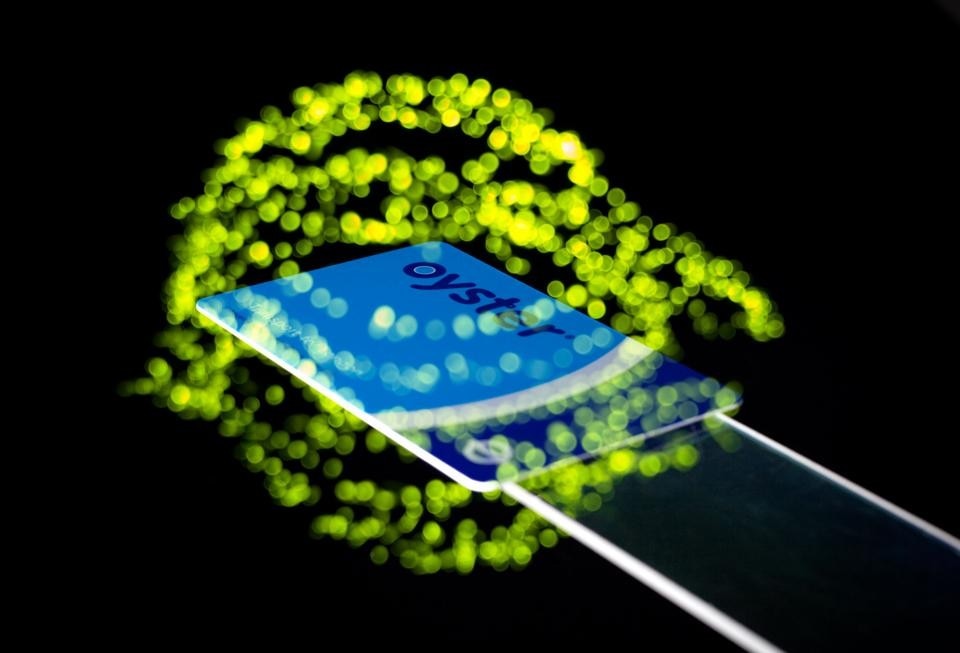
The political and economic struggles around spectrum allocation go on, specially with the emergence of new actors like the big tech companies (Google especially) that are joining the big stakeholders of the past (media conglomerates, the military) in the fight for this scarce resource. Neo-liberal politics have detracted from the vision of the Spectrum as a public resource, as administrative licence allocation has started to be replaced by frequency auctions. But it seems likely that emergent technologies (4G, Wimax) will in the next years reshape the way we use it.
Notes:
1. Bullivant, L. (2005), "Sky Ear, Usman Haque", Architectural Design, Volume 75, Issue 1, Special Issue "4dspace: Interactive Architecture", January- February 2005, p. 8-1.
2. Braga,Newton C. (2001), "Pirate radio and video: experimental transmitter projects". Published by Newnes
3. We want to say thanks to José Luis de Vicente for sharing his thoughts and ideas with us.
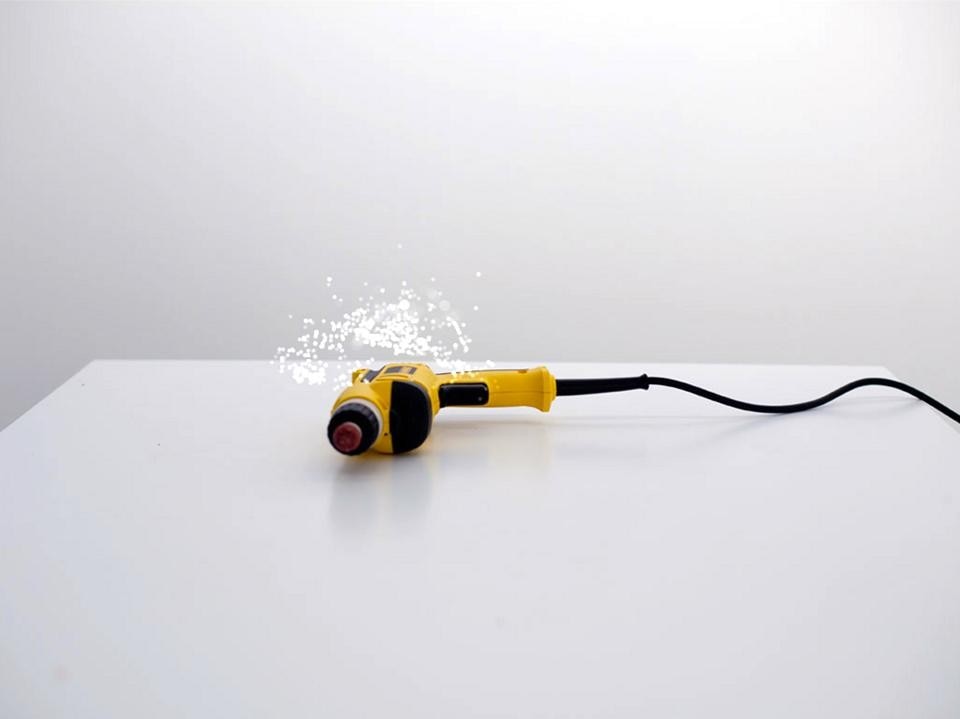
Arts Santa Mónica
Through 4 March 2012


